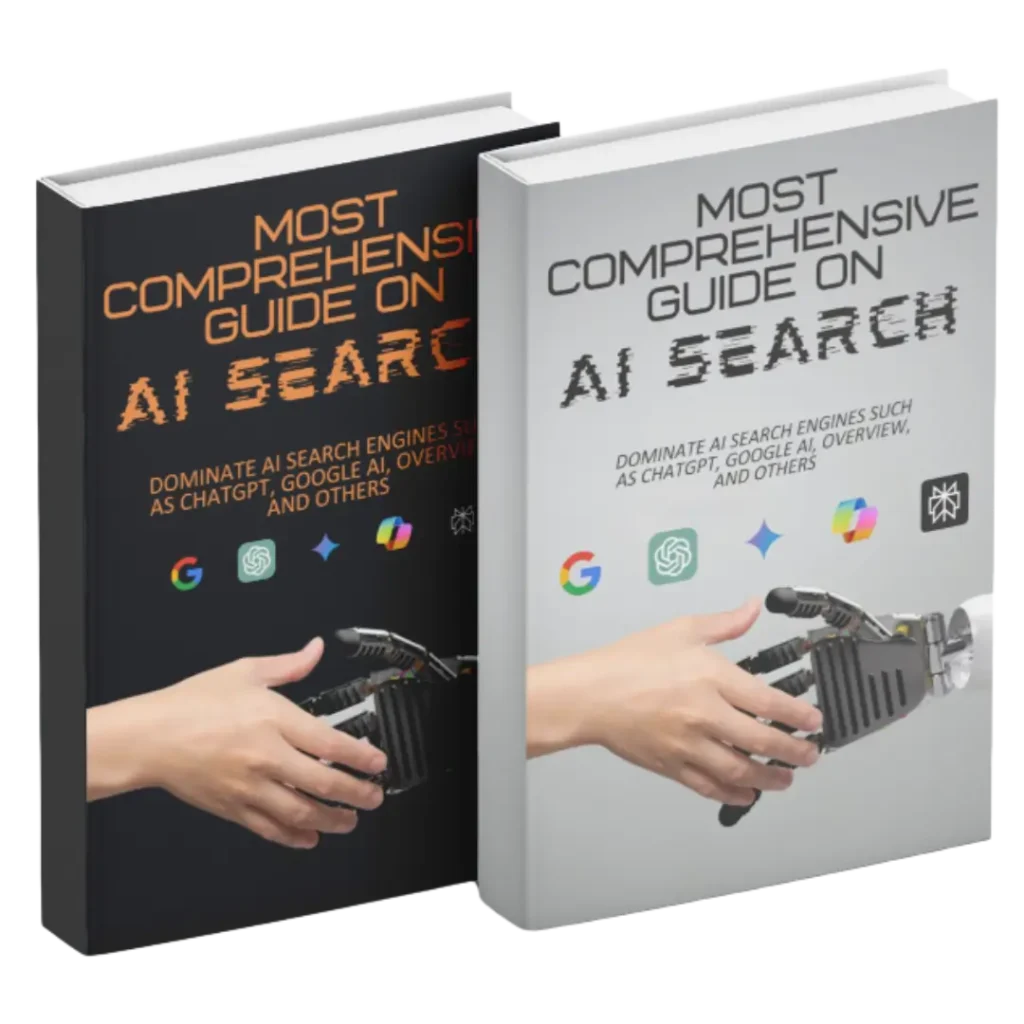Table of Contents
ToggleIntroduction: AEO vs SEO in the Age of AI-Driven Search
Imagine this: You’re Googling “best hiking boots for rocky terrain.” In 2015, you’d scroll through 10 blue links. In 2025? Google’s AI Overview instantly compares top brands, prices, and durability specs—citing sources like REI and OutdoorGearLab—while ChatGPT drafts you a packing list. No clicks, no ads, just answers.
This shift underscores the critical debate of AEO vs SEO, let me tell you: the game’s changed. This is the reality of AI-driven search. Answer Engine Optimization (AEO) isn’t just “SEO’s cool younger sibling”—it’s a survival skill. In this blog, we are going to cover the difference between AEO and SEO.

Why This Matters Now
84% of Google searches trigger AI Overviews (MarketMuse, 2025).
77% of mobile queries end without a click (SparkToro).
ChatGPT serves 180M+ users monthly, bypassing traditional SERPs (Outreach Monks).
What is AEO? Answer Engine Optimization for AI Search
If SEO is the librarian who helps you find the right book, AEO is the friend who just hands you the exact page you need. The key difference between AEO and SEO lies in intent: SEO targets rankings, while AEO targets direct answers in AI-generated summaries, voice search, and zero-click results.
Example of AEO:
- AI Overviews: These are the summaries you see at the top of Google’s search results. Want a deep on on What Google AI Overview is?, visit this post.
- Voice Search Responses: Think Alexa, Siri, or Google Assistant answering your questions.
- Zero-Click Results: Featured snippets that give users the info they need without clicking through.

Zero-Click Trends
77.22% of mobile searches end without a click, as users get answers directly from SERPs or AI OverviewsSource: SparkToro via On The Map Marketing
40.7% of voice search answers come from AI Overview & featured snippets, emphasizing the need for concise, structured content Source: Backlinko).
If the examples above sound bland to you, let me give you a culinary analogy to explain the concept of Answer Engines. Let’s say you in the good old days, you Google “how to cook medium rare steak” (because we’ve all ruined at least one $20 cut of meat, right?). Search Engine is that friend who sends you 17 recipe links, three YouTube tutorials from bearded grill masters, and a Reddit thread debating the merits of butter-basting vs. dry rubs. You’ll click, scroll past ads for “revolutionary meat thermometers,” and maybe—maybe—find a usable tip buried under someone’s life story about their first BBQ.
Answer Engines on the other hand? That’s Gordon Ramsay materializing in your kitchen, slapping the tongs out of your hand, and barking, “IT’S NOT A SHOEWE, YOU DONKEY!” while showing you the exact sear time, internal temp, and a GIF of how the steak should bleed (politely, like a British aristocrat). No ads, no blogs about “my journey to carnivore enlightenment”—just answers faster than you can say, “But the recipe said 450 degrees?!”
It’s the difference between reading War and Peace and getting a TikTok hack that actually works. AI doesn’t care about your SEO-optimized journey—it’s here to save dinner before your smoke alarm does.

Story Time!
How “2 Percent” Gains Massive 200% Increase in Traffic!
So, I have this awesome friend named Michael Easter who used AEO in his newsletter, Two Percent, and it helped him land a listing for the query “how to measure fitness tracker accuracy” on Google AI Overview. His traffic skyrocketed faster than a viral TikTok trend! How cool is that?
SEO: The O.G. Hustler
Remember, the days when you could boost rankings simply by jamming keywords into every possible nook and cranny? That was the era of keyword stuffing, a strategy that feels almost laughable now. Back then, throwing in “best coffee maker” fifty times was considered savvy. Can you imagine?
But those days are over. Google has outsmarted such tactics. Today’s SEO landscape demands finesse. It’s no longer about being a loud carnival barker; it’s about being an organized librarian. Precision matters. Modern techniques focus on providing genuine value. Engaging content that meets user needs is the name of the game.
So, bid farewell to the cluttered, repetitive articles of the past. Embrace clarity and relevance instead. The evolution of SEO is a testament to the internet’s growth, pushing for quality over quantity and rewarding those who adapt.
Pro Tip: Even in the Age of AEO, You Can’t Completely Ignore SEO
SEO is like a long-term relationship. You’ve got to nurture it, put in the effort, and keep things fresh. Neglect it, and you’ll find yourself ghosted by Google faster than a bad Tinder date.

Market Share and Competition
Google holds 93.87% of mobile search traffic, making it the primary focus for AEO/SEO efforts Source: Statcounter 95% of web pages have zero backlinks, but top-ranking AEO content averages 3.8x more backlinks than competitors Source: Backlinko
How to Marry AEO & SEO (My Hacks That Actually Work)
AEO Hack #1: Layer Structured Data on SEO-Optimized Pages
Example: SaaS company FlowPath added HowTo schema to its “Project Management Guide,” earning a 40% CTR boost from position-zero snippets.
AEO Hack #2 Repurpose Top Content for Voice Search
Tactic: Turn “How to Start a Podcast” into a Q&A format targeting Alexa/Google Assistant queries.
AEO Hack #3 Answer Questions Upfront, Then Dive Deep
Use headers like “What is [Topic]?” to capture AEO snippets, followed by detailed SEO-optimized sections.
AEO Hack #4 Build Authority with E-E-AOT (Experience, Expertise, Authoritativeness, Trustworthiness)
Case Study: FinTech startup MoneySphere increased demo requests by 70% by adding “As seen in TechCrunch” badges and founder video explainers.
Hack #5 Optimize for Both Keyword AI Prompts
Target short-tail keywords (SEO) and long-tail questions (AEO) like “How does AEO work?”.
Hack #6 Repurpose Top Content
Turn blog posts into voice-search-friendly Q&A guides or video summaries.
Hack #7 Leverage Structured Data
Implement FAQ, How-To, and Q&A schema markup to boost AEO visibility. For instance, pages with FAQ schema markup are 50% more likely to appear in Google AI Overview and 30% more likely to appear in ChatGPT and Perplexity AI.
Hack #8 Collaborate With Third Party Review Sites
Third-party reviews and comparison sites such as TrustPilot and ReveiwRecap.io highly influence results generated by Answer Engines. As per our latest study, 43% of consumers use Answer Engines to ask for reviews before purchasing or visiting local shops.

Case Study: AEO + SEO in ActionBrand
Two Percent Newsletter
SEO Strategies: Optimized for “best fitness trackers” with long-form reviews.
AEO Strategy: Added FAQ schema to target “How accurate are fitness trackers?
Result: 50% increase in organic traffic (SEO) + 3 AI Overview (AEO) in 3 months.
Conclusion: Future-Proof Your Strategy with AEO and SEO
AEO vs SEO isn’t a battle—it’s a partnership. To survive AI search, you need both: SEO for the deep divers, AEO for the “I-need-this-now” crowd.
While SEO remains vital for organic rankings, AEO is essential for dominating AI-driven search. By blending keyword-rich long-form content (SEO) with concise, schema-optimized answers (AEO), brands can thrive in both traditional and AI-powered Answer Engines.
Ready to optimize for both? Start by auditing your content for AEO opportunities and partnering with an SEO agency versed in AI search tactics.
FAQs: AEO vs SEO
What is Answer Engine Optimization (AEO)?
AEO is the practice of optimizing content to appear in AI-generated answers, featured snippets, and voice search results. It focuses on providing direct, concise responses to user queries in platforms like Google’s AI Overviews, ChatGPT, and voice assistants.
Difference between AEO and SEO?
While SEO aims to rank websites in traditional search results, AEO targets zero-click visibility in AI answers. SEO uses keywords, backlinks, and long-form content, while AEO prioritizes structured data, conversational queries, and succinct answers.
Why is AEO becoming critical in 2025?
With 84% of Google searches triggering AI Overviews (March 2025 data) and 50% of U.S. adults using voice search daily, users increasingly rely on instant answers rather than clicking links.
Can I use AEO and SEO together?
Yes! For example, optimize long-form blog content (SEO) while adding FAQ schema and concise Q&A sections (AEO). Brands like MedAnswers saw 65% of traffic from AI Overviews by combining both strategies.
What technical steps are needed for AEO?
Implement structured data (FAQ, How-To, or Q&A schema), optimize for natural language keywords, and ensure mobile-friendliness. Pages with schema markup are 50% more likely to appear in featured snippets.
How do I measure AEO success?
The track featured snippet rankings, Google Search Console’s “AI Overview impressions,” and voice search traffic. Tools like SEMrush and Ahrefs now include AEO-specific metrics.
Which industries benefit most from AEO?
Healthcare, finance, and tech—industries with high informational queries. For instance, MedAnswers grew featured snippet appearances by 50% using medical schema markup.
Does voice search optimization require AEO?
Yes. Voice searches are conversational (e.g., “How do I lower cholesterol?”), so AEO tactics like natural language answers and local intent targeting (e.g., “near me”) are essential.
How does E-E-A-T impact AEO?
Google prioritizes content with Experience, Expertise, Authoritativeness, and Trustworthiness. Expert-reviewed content (e.g., physician-cited articles) earns 3x more AI Overview inclusions.
Will AEO replace SEO in the future?
No—SEO remains vital for long-term authority, while AEO captures immediate AI-driven visibility. Brands like EcoGear combined both to drive 300% organic traffic and dominate AI Overviews.







